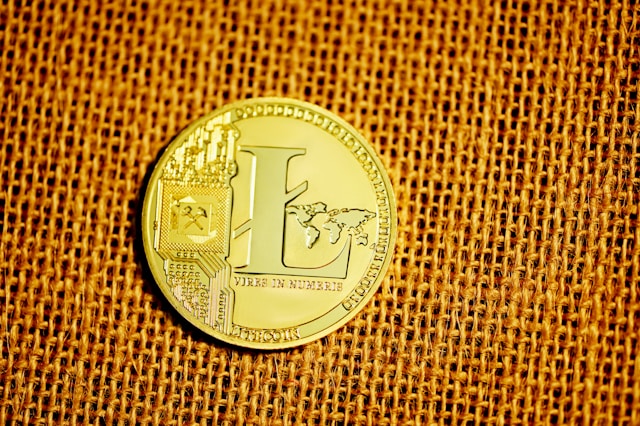As the crypto market continues to grow and evolve, understanding the differences between various digital currencies is crucial, whether you’re an investor, a miner, or simply curious about the financial technologies shaping the future. Among the several altcoins that have gained a significant following, Bitcoin and Litecoin stand out, with contrasting yet complementary features. This post will provide a comprehensive evaluation of Bitcoin and Litecoin, illuminating what sets them apart and how these differences might influence their utility and value in the blockchain ecosystem.
Bitcoin to litecoin ratio
The Bitcoin to Litecoin ratio is a metric often used by traders and investors to understand the relative value between these two cryptocurrencies. Typically expressed as the amount of Litecoin one can acquire with a single Bitcoin, this ratio highlights the market’s valuation of each coin and helps in analyzing their trading pair’s performance over time. The ratio fluctuates based on various factors including demand and supply dynamics, technological advancements, and the broader sentiment in the cryptocurrency market. While Litecoin was designed to be a ‘lighter’ version of Bitcoin with faster transaction times, the ratio can provide insights into how these technical differences impact investor preferences and the liquidity of each asset.
A Brief Overview of Bitcoin and Litecoin
So what exactly are Bitcoin and Litecoin? Both Bitcoin and Litecoin belong to a class of digital currencies called cryptocurrencies, which operate on a technology called blockchain. They provide a way to make peer-to-peer transactions without the need for a central authority, such as a bank. Bitcoin, created in 2009 by an anonymous figure known as Satoshi Nakamoto, is widely considered as the first cryptocurrency and has since become a household name. Litecoin, on the other hand, was launched in 2011 by Charlie Lee, a former Google engineer. Lee describes Litecoin as the ‘silver’ to Bitcoin’s ‘gold’, referencing its role as a more efficient means of accomplishing the same goals as its precursor.

The Fundamental Differences
Technology and Speed
One of the most significant differences between Bitcoin and Litecoin is the technology that powers them, as well as the corresponding transaction speeds.
Bitcoin uses the SHA-256 algorithm for mining, which requires significant computational power and consequently longer times to produce new blocks. This results in an average block time of 10 minutes, meaning transactions on the Bitcoin network can take about ten minutes to be confirmed.
Litecoin, however, utilizes the Scrypt mining algorithm, which is memory-intensive but not as computationally demanding as SHA-256. As a result, Litecoin boasts a faster block generation time of around 2.5 minutes, leading to quicker transaction confirmations.
Market Penetration and Adoption
Bitcoin has established itself as the leading cryptocurrency, with the most substantial market cap and highest adoption rates. It’s widely accepted as a form of payment and stored value. Its scarcity and decentralization are key features contributing to its status as ‘digital gold.’
Litecoin, although much smaller in terms of market cap, holds its own and is one of the top 10 biggest cryptocurrencies. It enjoys a level of market penetration and merchant acceptance that makes it a useful tool for everyday transactions, albeit on a smaller scale than Bitcoin.
Scarcity and Inflation
Another area of divergence is in their supply models. Bitcoin has a maximum supply cap of 21 million coins, making it a deflationary asset once all coins are mined. In contrast, Litecoin has a maximum supply of 84 million coins, four times that of Bitcoin, but still a finite and predictable supply that ensures scarcity.
Furthermore, the rate at which new coins are created in both networks differs due to the block reward halving events. Bitcoin undergoes a halving approximately every four years, which reduces the reward for mining new blocks and slows down the creation of new bitcoins. Litecoin follows a similar halving mechanism at a faster rate, approximately every four times that a Bitcoin halving occurs, to maintain a comparative scarcity.
A Comparative Look at Security and Community
Network Hashrate and Resilience
The security and resilience of a cryptocurrency network are typically measured by its hashrate. Bitcoin commands the highest and most robust hashrate among all cryptocurrencies, providing an unprecedented level of security against potential attacks.
Litecoin, while significantly lower than Bitcoin, still maintains a hashrate that’s considerable and ensures that its network remains secure against most threats.
Developer and User Communities
The strength of the communities behind each cryptocurrency is another crucial factor in their success. Bitcoin has a massive and diverse community, ranging from developers to miners and end-users. This broad base of support ensures that Bitcoin is constantly being upgraded and that there is ample infrastructure to support its use around the world.
Litecoin also possesses a dedicated community that actively contributes to its development and adoption. However, it is smaller compared to Bitcoin’s, which impacts Litecoin’s pace of development and ecosystem growth.
Price and Volatility
The price disparity between Bitcoin and Litecoin is stark, with Bitcoin maintaining a much higher value than its ‘digital silver’ counterpart. This discrepancy leads to different use cases and investment profiles for each cryptocurrency.
Both Bitcoin and Litecoin, like most cryptocurrencies, are known for their price volatility, although Bitcoin’s market dominance leads to a slightly more stable market compared to Litecoin, which is often influenced by changes in Bitcoin’s value.
How to Convert Litecoin to Bitcoin ?
Converting Litecoin to Bitcoin is a straightforward process that can be carried out via cryptocurrency exchanges. Follow these general steps:
- First, you must choose a cryptocurrency exchange that supports both Bitcoin and Litecoin trading pairs. Popular exchanges like Coinbase, Binance, or Kraken offer this service.
- Create an account on the chosen exchange, if you don’t already have one. Be prepared to go through a verification process, which may require you to provide identification and other personal details to comply with anti-money laundering laws.
- Once your account is set up, deposit Litecoin into your exchange wallet. Look for the deposit section, select Litecoin, and transfer your coins from your personal wallet to the exchange wallet.
- After the deposit is confirmed, navigate to the trading section of the exchange. You’ll find Litecoin to Bitcoin trading pairs, often denoted as LTC/BTC.
- Execute a trade by entering the amount of Litecoin you want to convert to Bitcoin. You can choose between a market order (which executes immediately at the current market price) or a limit order (where you set the price you’re willing to buy or sell).
- Once the trade is complete, you will have Bitcoin in your exchange wallet. You may then choose to keep it on the exchange, transfer it to your personal wallet, or make further trades.
Always be aware of the fees involved in trading and withdrawing assets, as well as the security risks of holding cryptocurrencies on an exchange. It’s recommended to perform such transactions using a secure and stable internet connection.
How long do litecoin transactions take ?
Typically, Litecoin transactions are swift, with transaction confirmations occurring roughly every 2.5 minutes due to the coin’s faster block generation time. This is in contrast to Bitcoin’s 10-minute block intervals. However, it’s important to note that for a transaction to be considered fully confirmed and secure, a number of subsequent blocks should be added to the blockchain, which means waiting for additional confirmations. Most services require 6 confirmations for Litecoin, which can take approximately 15 minutes in total, but this can vary depending on network congestion and transaction fees.
Is Litecoin better than Bitcoin?
The question of whether Litecoin is “better” than Bitcoin is subjective and depends on the criteria used for comparison. Each cryptocurrency was created with different goals in mind, and thus they cater to different needs and use cases.
Bitcoin, often referred to as “digital gold,” is widely recognized as the first and most established cryptocurrency. It holds the highest market capitalization and is pursued mainly as a store of value and investment asset. Bitcoin’s robust network security, widespread acceptance, and community support make it a cornerstone of the cryptocurrency market.
Litecoin, on the other hand, was designed to be “silver to Bitcoin’s gold,” prioritizing quicker transaction times and lower fees. This makes Litecoin a more practical choice for smaller, everyday transactions and for users who prioritize speed and cost-effectiveness. However, its smaller market cap and community size mean that it doesn’t match Bitcoin’s level of security and infrastructure.
Ultimately, the ‘better’ cryptocurrency is one that aligns closely with the user’s priorities. For long-term investment and larger transactions requiring high security, Bitcoin may be preferred. However, for frequent, smaller transactions with lower fees, Litecoin could be more advantageous. It’s essential to research and consider personal investment goals when making a decision between the two.
Does LTC have a future?
When discussing Litecoin’s future, it’s important to consider its ongoing relevance and adaptability to the evolving cryptocurrency landscape. As a lighter and faster counterpart to Bitcoin, Litecoin has maintained a level of utility, particularly in contexts where speedy transactions are valued. Furthermore, the development team behind Litecoin is continuously working to implement improvements such as the MimbleWimble upgrade for enhanced privacy and security.
Litecoin’s ability to retain user trust and remain technologically resilient in face of new cryptocurrencies will be key to its future. While it is not expected to overtake Bitcoin in terms of market capitalization or infrastructure, Litecoin may continue to hold a significant place as a convenient, secondary option for crypto-users who value quick and cost-effective transactions. With an active community and ongoing development, Litecoin’s future, while not without challenges, appears to hold potential.
Conclusion: What’s the Best Bet?
Deciding between investing in Bitcoin or Litecoin comes down to a variety of factors, including investment goals, risk tolerance, and personal beliefs in the technology’s potential.
Bitcoin, with its first-mover advantage and mass adoption, is seen by many as a conservative but potentially lucrative long-term investment. Its role as a store of value akin to gold suggests that it may function best in a portfolio as a hedge against inflation and economic instability.
Litecoin, with its faster block times and lower transaction costs, is positioned as more of a medium of exchange suitable for facilitating everyday transactions. While it may not match Bitcoin’s monumental growth in value, it might offer more attainable returns for some investors.
In the dynamic and fast-paced world of cryptocurrency, one cannot predict with certainty which digital asset will emerge as the preeminent standard of exchange. Therefore, it may be prudent to consider a diversified investment approach that includes a mix of cryptocurrencies, including both Bitcoin and Litecoin, to manage risk and capitalize on the unique attributes of each.
For those who are simply interested in using cryptocurrency for transactions, the choice between Bitcoin and Litecoin largely depends on the nature of the transactions, with Bitcoin being more suitable for larger, less frequent transactions, and Litecoin being more suitable for the smaller, day-to-day payments due to its faster transaction times and lower fees.
